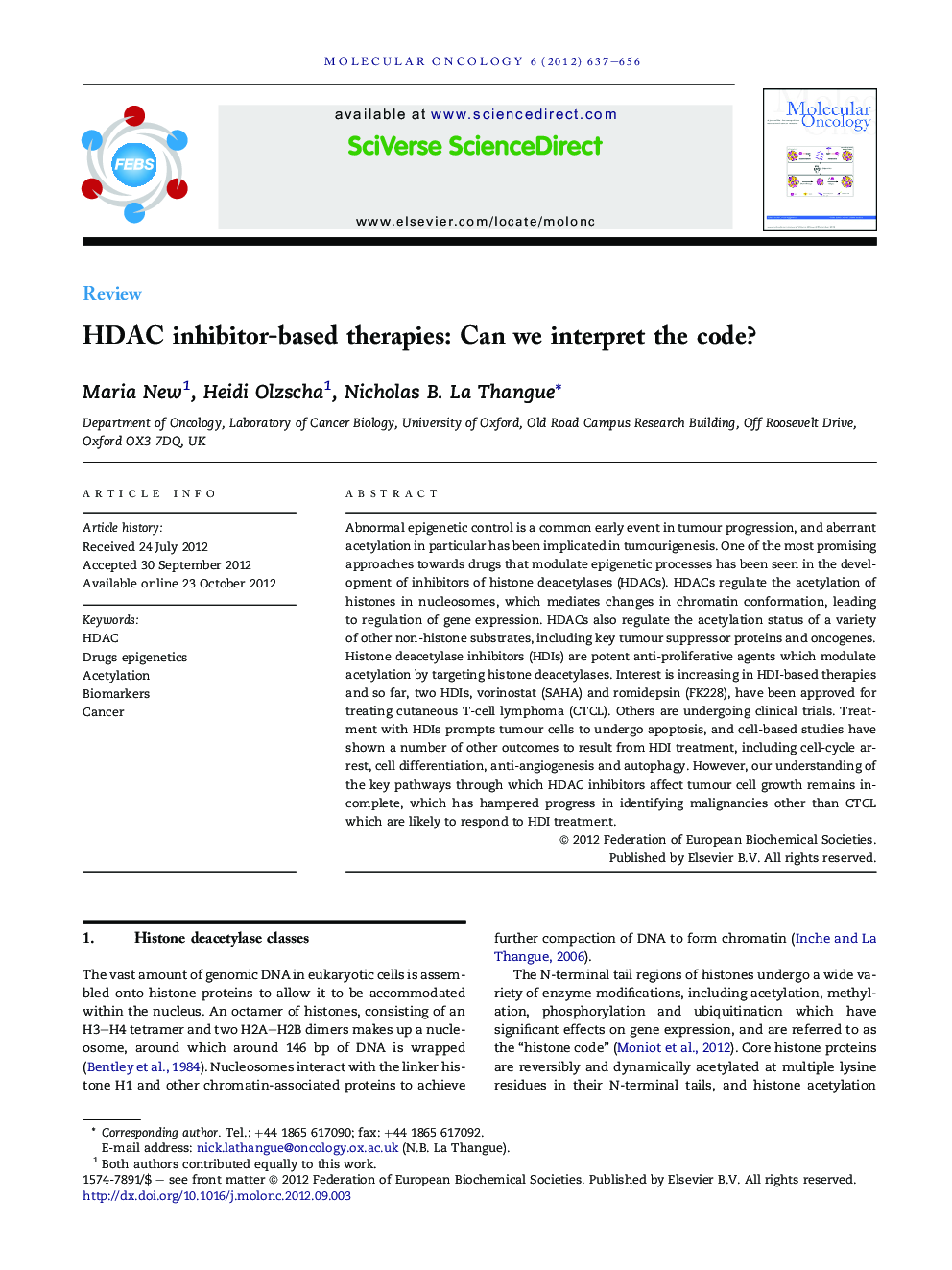| کد مقاله | کد نشریه | سال انتشار | مقاله انگلیسی | نسخه تمام متن |
|---|---|---|---|---|
| 2145810 | 1088829 | 2012 | 20 صفحه PDF | دانلود رایگان |

Abnormal epigenetic control is a common early event in tumour progression, and aberrant acetylation in particular has been implicated in tumourigenesis. One of the most promising approaches towards drugs that modulate epigenetic processes has been seen in the development of inhibitors of histone deacetylases (HDACs). HDACs regulate the acetylation of histones in nucleosomes, which mediates changes in chromatin conformation, leading to regulation of gene expression. HDACs also regulate the acetylation status of a variety of other non-histone substrates, including key tumour suppressor proteins and oncogenes. Histone deacetylase inhibitors (HDIs) are potent anti-proliferative agents which modulate acetylation by targeting histone deacetylases. Interest is increasing in HDI-based therapies and so far, two HDIs, vorinostat (SAHA) and romidepsin (FK228), have been approved for treating cutaneous T-cell lymphoma (CTCL). Others are undergoing clinical trials. Treatment with HDIs prompts tumour cells to undergo apoptosis, and cell-based studies have shown a number of other outcomes to result from HDI treatment, including cell-cycle arrest, cell differentiation, anti-angiogenesis and autophagy. However, our understanding of the key pathways through which HDAC inhibitors affect tumour cell growth remains incomplete, which has hampered progress in identifying malignancies other than CTCL which are likely to respond to HDI treatment.
► HDAC is a ubiquitous family of enzymes involved in many aspects of cancer biology.
► HDAC inhibitors are potent anti-proliferative agents and anti-cancer drugs.
► HDAC inhibitors vorinostat and romidepsin are approved for treating T-cell lymphoma.
► The key question is how to identify responsive tumours and relevant biomarkers.
► Understanding the biology and key pathways influenced by HDACs is required.
Journal: Molecular Oncology - Volume 6, Issue 6, December 2012, Pages 637–656